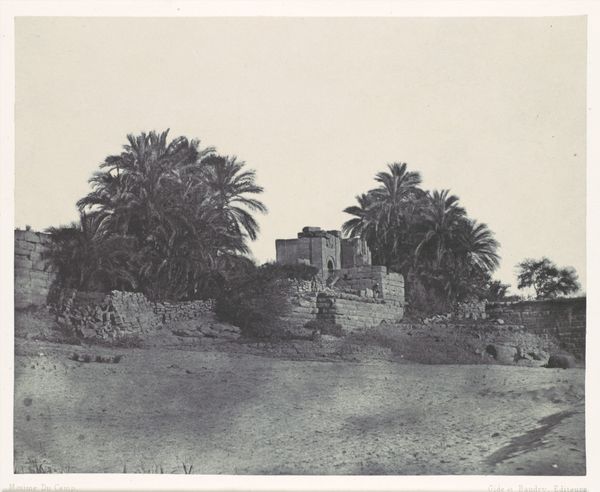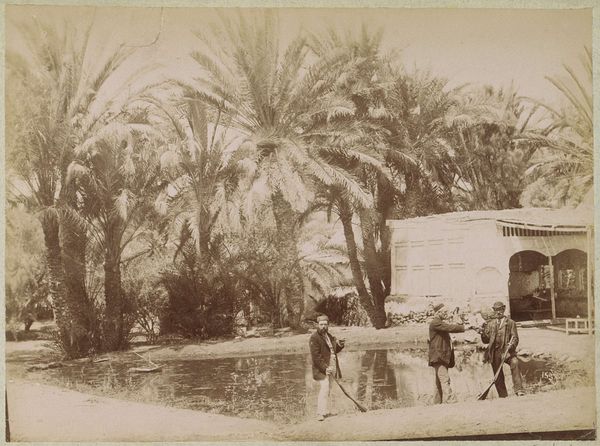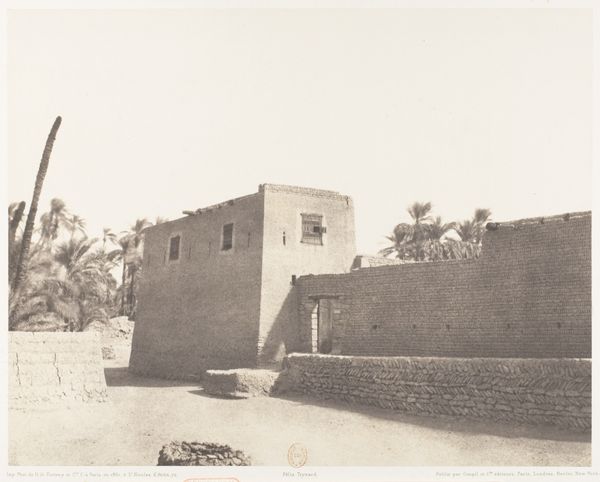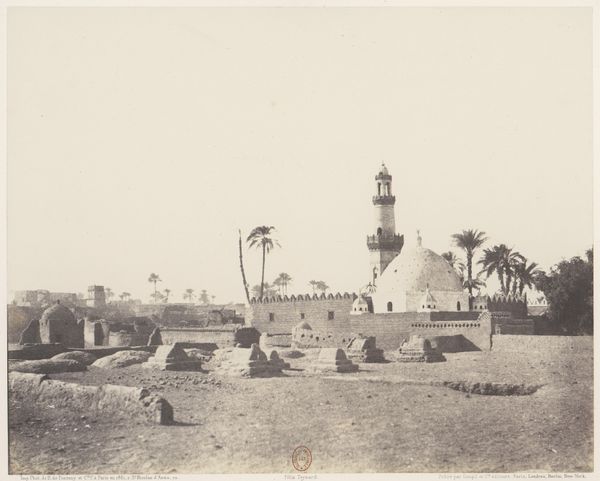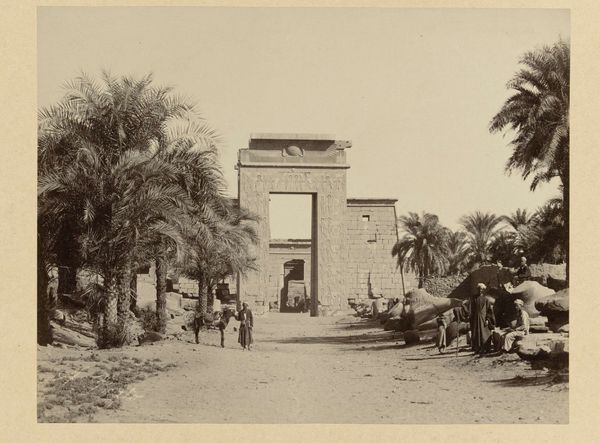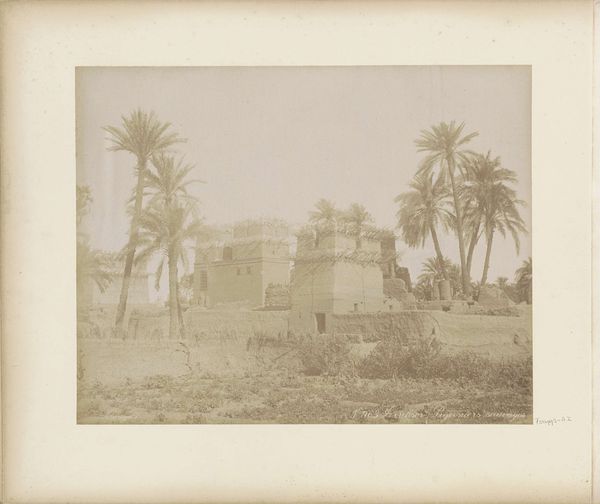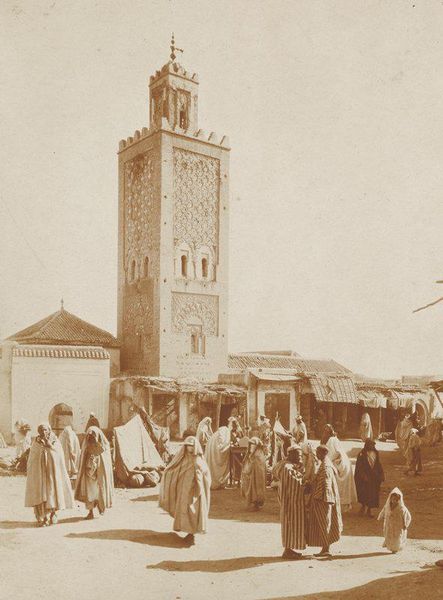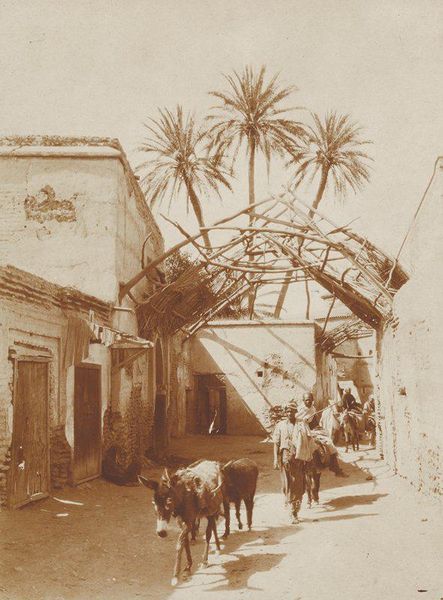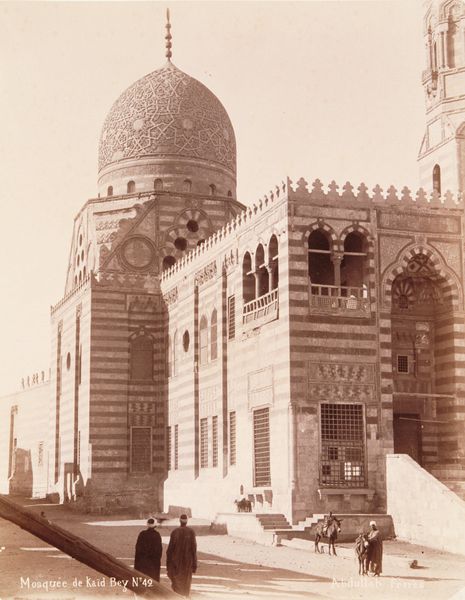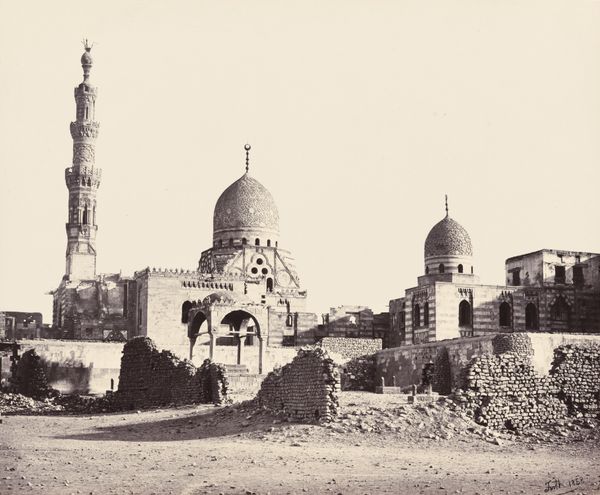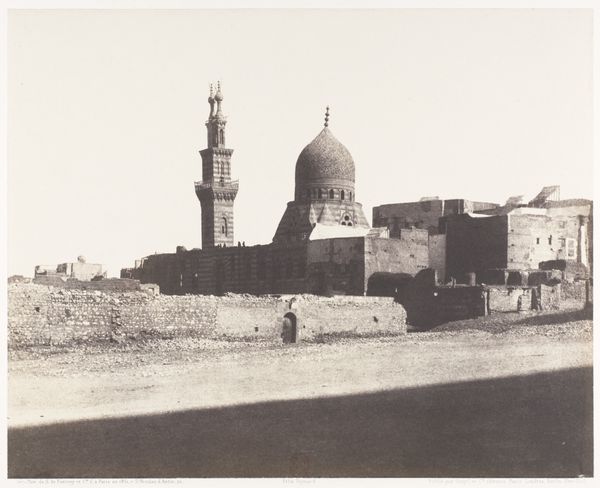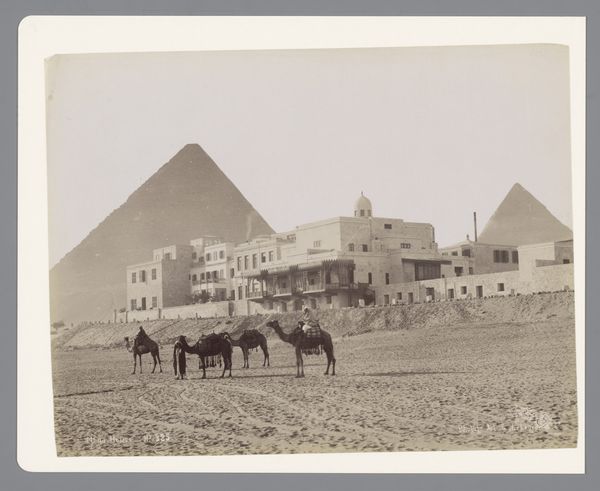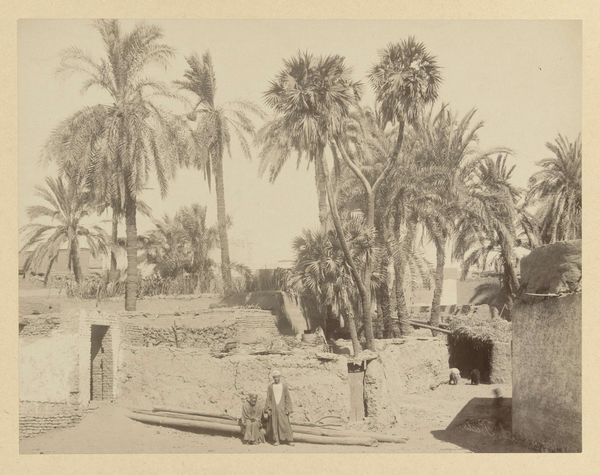
gelatin-silver-print, photography, gelatin-silver-print
#
gelatin-silver-print
#
landscape
#
street-photography
#
photography
#
orientalism
#
gelatin-silver-print
#
cityscape
Dimensions: 6 3/4 x 9 1/16 in. (17.15 x 23.02 cm) (image)7 1/16 x 9 3/8 in. (17.94 x 23.81 cm) (sheet)
Copyright: No Copyright - United States
Curator: Here we have an untitled gelatin-silver print from around the 20th century, now residing here at the Minneapolis Institute of Art. Editor: It strikes me as intensely lonely, despite the presence of people. That long, imposing wall stretching into the distance… the sepia tone only amplifies that sense of a distant past, almost like looking at a dream. Curator: Indeed. Let’s consider that sepia tone. The gelatin-silver printing process allowed for warmer, richer tones than earlier photographic methods. Think about how that specific choice of photographic process shapes not only the image, but also our perception and consumption of it. It creates a sense of ‘authenticity’ – even if this 'authenticity' is constructed. Editor: And how! Look at that wall again, snaking its way like a fortified serpent. Walls so often function symbolically, representing barriers, protection, exclusion. They can represent psychological barriers as much as physical ones, can't they? Perhaps hinting at the socio-political climate of the time and place in which the photograph was taken. Curator: Precisely. This gelatin-silver print, then, isn’t simply a captured image. It's an object manufactured within a very specific socio-economic framework that speaks volumes. Consider who was behind the camera, what their access was to the technology and to this place, and why this imagery might have been produced, consumed, and circulated. Editor: And look at the figures along the road – nearly all walking with donkeys loaded down, perhaps going to market. Palm trees poke out behind the battlements. The overall composition really evokes that classic, exoticised Orientalist vision of North Africa so popular at the time. Curator: The circulation of images like these really highlights that connection between photographic practices and power structures of the era. These materials, the printing technology, were intrinsically tied to the economic and industrial capabilities of certain parts of the world. It shaped not only what could be represented, but also who controlled the narrative. Editor: Fascinating! Thinking about this artwork now, I see a deeper conversation between past and present, barrier and path, exoticism and lived reality embedded in those sepia tones and imposing architectural details. Curator: I completely agree; the convergence of its means of production with the visual content allows it to serve as both aesthetic object and historical artifact. It’s quite the powerful combination.
Comments
No comments
Be the first to comment and join the conversation on the ultimate creative platform.
